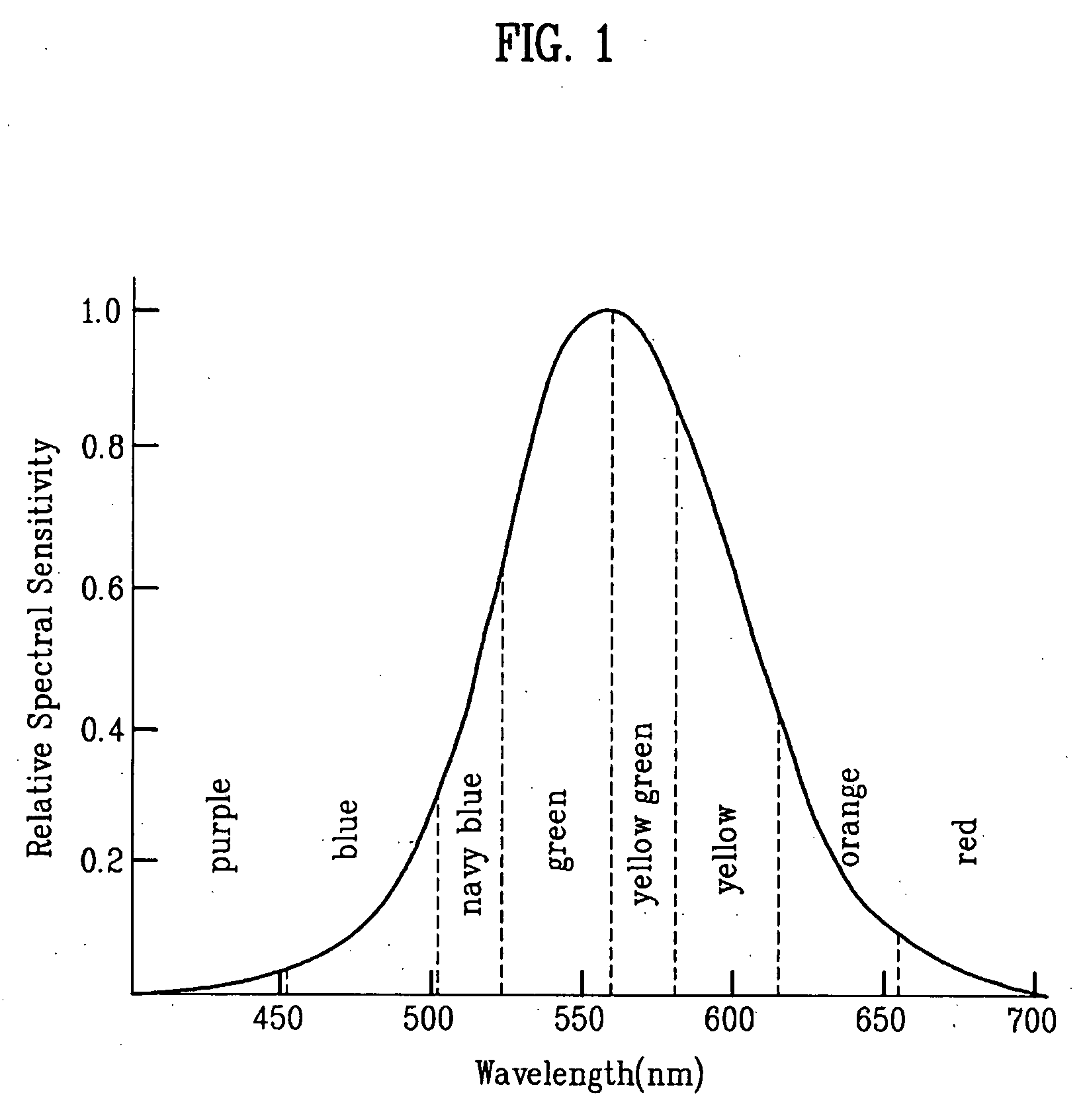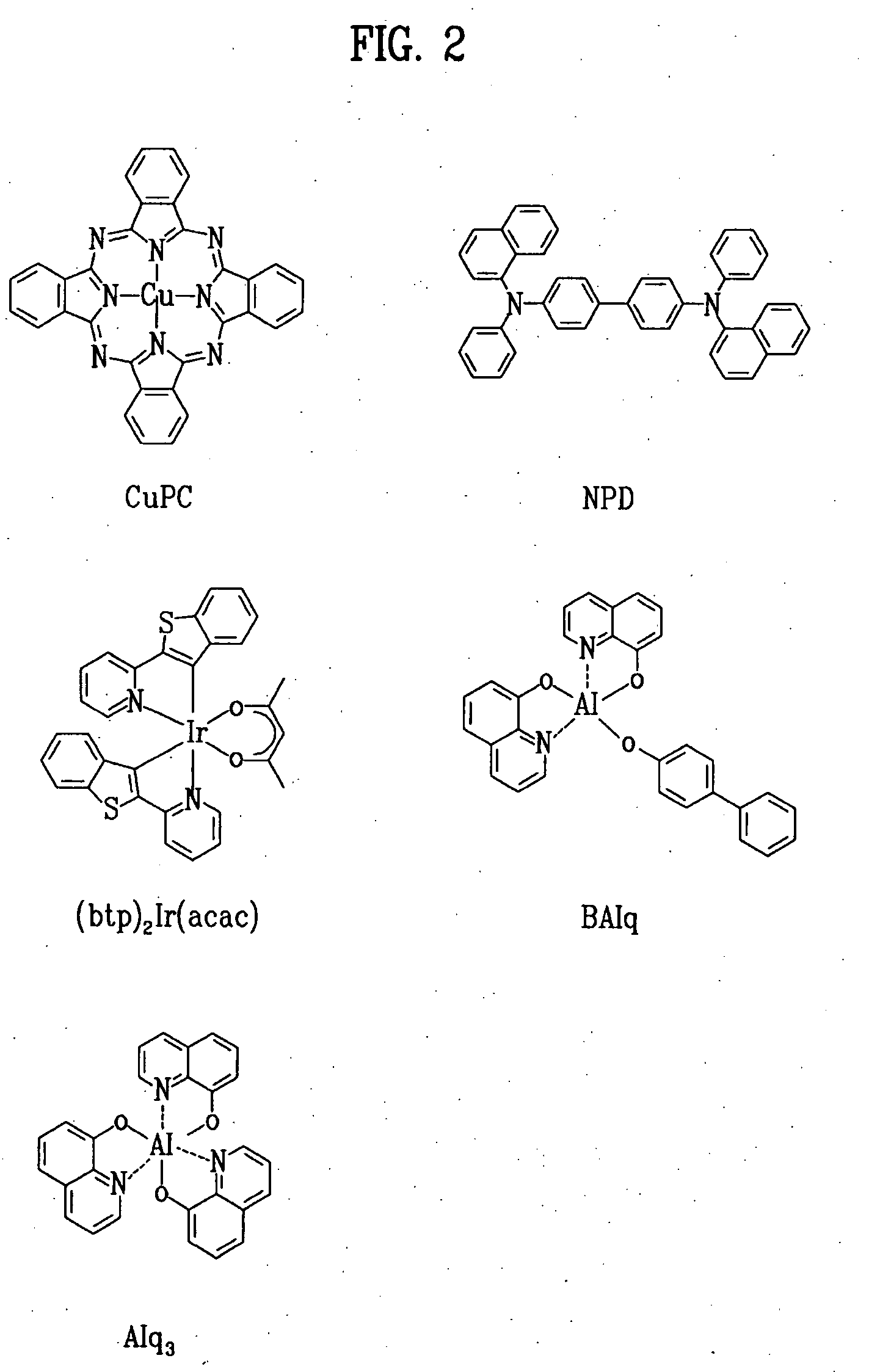Red phosphorescent compound and organic electroluminescent device using the same
- Summary
- Abstract
- Description
- Claims
- Application Information
AI Technical Summary
Benefits of technology
Problems solved by technology
Method used
Image
Examples
synthesis example
1. Synthesis of 3-(3,5-dimethylphenyl)-4-methylisoquinoline
[0034]
[0035]Propane-2-yl-benzene (100 mmol), acetic acid palladium (2.7 mmol), triphenylphosphine (5 mmol), and sodium carbonate (50 mmol) were put in a dried two-neck round-bottom flask and dissolved in DMF (100 ml). Subsequently, tert-butyl-(2-iodo-benzylidene)amine (50 mmol) was added thereto. The resulting solution was stirred in a bath at 100° C. for 24 hours. After completion of the reaction, the temperature was allowed to cool to room temperature. The reaction mixture was extracted with ether and saturated NH4Cl. The extract was distilled under reduced pressure. The resulting residue was purified by silica gel column chromatography (hexane: EtOAc=5:1) to yield 3-(3,5-dimethylphenyl)-4-methylisoquinoline.
[0036]2. Synthesis of Dichloro-Crosslinked Dimer Complex
[0037]Iridium (III) chloride hydrate (1 mmol), 3-(3,5-dimethylphenyl)-4-methylisoquinoline (2.5 mmol), and a mixed solvent (3:1) of ethoxyethanol and distilled wa...
example 1
[0041]An ITO-coated glass substrate was patterned to have a light-emitting area of 3 mm×3 mm, followed by cleaning. After the patterned substrate was disposed in a vacuum chamber, the standard pressure of the chamber was adjusted to 1×10−6 torr. CuPc (200 Å), NPD (400 Å), BAlq+A-1 (7%) (200 Å), Alq3 (300 Å), LiF (5 Å) and Al (1,000 Å) were sequentially deposited on the ITO glass substrate to fabricate an organic EL device.
[0042]The luminance of the organic EL device thus fabricated was 1,326 cd / m2 at an electric current of 0.9 mA and a voltage of 6.1 V. At this time, the CIE chromaticity coordinates were x=0.601 and y=0.327. The lifetime (defined as the time taken before the luminance of the organic EL device decreases to half its initial value) of the organic EL device was 3,700 hours at 2,000 cd / m2.
example 2
[0043]An ITO-coated glass substrate was patterned to have a light-emitting area of 3 mm×3 mm, followed by cleaning. After the patterned substrate was disposed in a vacuum chamber, the standard pressure of the chamber was adjusted to 1×10−6 torr. CuPc (200 Å), NPD (400 Å), BAlq+A-2 (7%) (200 Å), Alq3 (300 Å), LiF (5 Å) and Al (1,000 Å) were sequentially deposited on the ITO glass substrate to fabricate an organic EL device.
[0044]The luminance of the organic EL device thus fabricated was 1,420 cd / m2 at an electric current of 0.9 mA and a voltage of 5.7 V. At this time, the CIE chromaticity coordinates were x=0.592 and y=0.330. The lifetime (defined as the time taken before the luminance of the organic EL device decreases to half its initial value) of the organic EL device was 4,200 hours at 2,000 cd / m2.
PUM
| Property | Measurement | Unit |
|---|---|---|
| Time | aaaaa | aaaaa |
| Percent by mass | aaaaa | aaaaa |
| Luminance | aaaaa | aaaaa |
Abstract
Description
Claims
Application Information
 Login to View More
Login to View More - R&D
- Intellectual Property
- Life Sciences
- Materials
- Tech Scout
- Unparalleled Data Quality
- Higher Quality Content
- 60% Fewer Hallucinations
Browse by: Latest US Patents, China's latest patents, Technical Efficacy Thesaurus, Application Domain, Technology Topic, Popular Technical Reports.
© 2025 PatSnap. All rights reserved.Legal|Privacy policy|Modern Slavery Act Transparency Statement|Sitemap|About US| Contact US: help@patsnap.com



